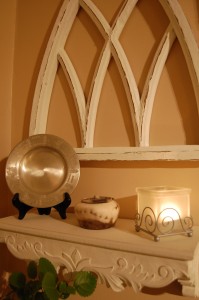 Hospitality
Hospitality
(Part II)
I’ve been rearranging my office space. Moving shelves and seats, the antique church pew, and other furniture. I’ve been rearranging books and things on shelves. I’m in search of a small round table to expand the creative work space and make room for others to pull up and work, too. At home we are changing flooring, rearranging rooms, and trying to make things more functional.
I’m imagining how to make my living and working spaces more welcoming.
Ever seen one of those little signs “a clean desk is the sign of a sick mind”? Usually it’s buried in someone’s work space amid overflowing papers, books, coffee cups, trinkets and other miscellaneous junk. The irony makes it funny.
Certain folks’ offices and homes have a way of embodying the kind of welcome that those who dwell there offer in an emotional and practical way. In other words, there is a certain sort of congruence between people and their habitats. There are inconsistencies of course. But when I think about friends who have the most openness to life and to other people, those folks often live and work in spaces that reflect that openness. And then I can think of others who are more defensive or scattered, or conflicted, and their spaces also reflect their personalities.
But the welcome is not limited to the space itself or even the quirks of personality of those who arrange a space. Institutions like churches, hospitals, businesses and schools have a long residue of tradition and practice that shapes how they welcome those who enter into their halls and rooms and grounds.
Physical Space
And even when we visit a place that is not entirely hospitable, we can by certain intentions, words, postures and gestures create a space of welcome. In my research, teaching and leadership roles I strive to create such a space of welcome that is constructed this way no matter the limits of the physical space.
Sometimes the physical space is a great help, like when we meet a group of pastors in a retreat center with beautiful art, natural light, a warm fire, and comfortable chairs and couches. Other times I find myself teaching in a classroom where we have to make do with less adequate surrounds. But the psychological, emotional and spiritual space created by the guidelines offered for the interview, conversation or class have a way of transcending less than ideal rooms.
The way people are invited to receive each other and to make room for stories and silence, ideas and songs, honesty and change, can create a kind of hospitable space into which those gathered can speak. As Nelle Morton says, we can “hear each other to speech.”
I’m about to move my desk next week to turn things around in a big way. I won’t feel barricaded behind it. Funny, it didn’t really occur to me that I could turn the L-shaped desk around in the space of my office . . . until something shifted in my own level of willingness to be open to what is. I’m not sure yet if it will work. The desk or the newfound openness to what is. Making a welcoming space also necessitates a certain kind of risk.
And that is a topic we’ll take up next time.




